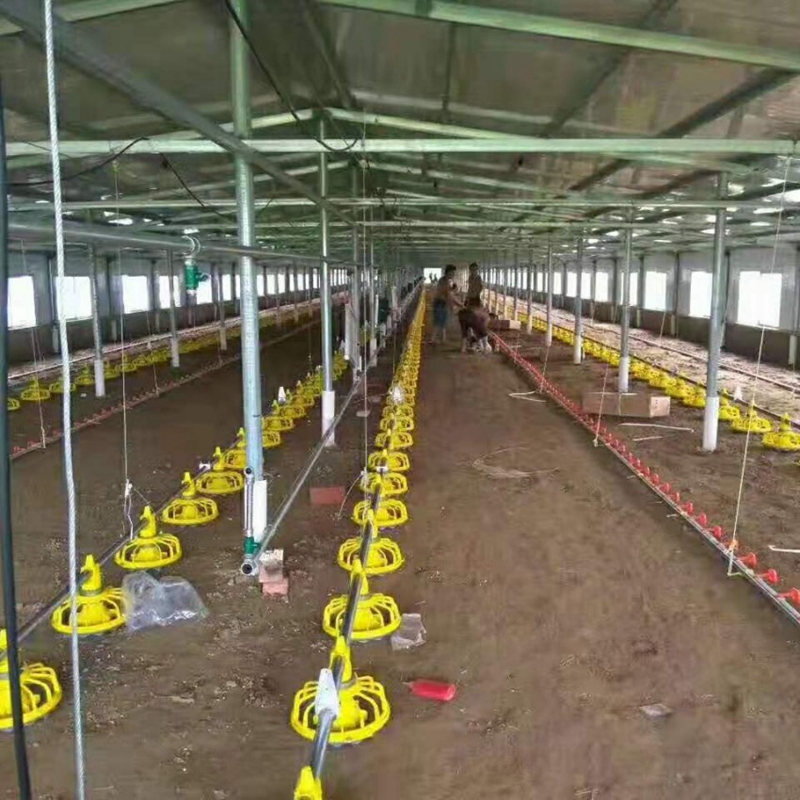poultry cage for layers
Dec . 28, 2024 20:57 Back to list
poultry cage for layers
The Importance of Poultry Cages for Layer Hens
The poultry industry plays a vital role in global food production, particularly in supplying high-quality protein through chicken eggs. Among the various methods of raising chickens, housing layer hens in cages, commonly referred to as battery cages or poultry cages, has been a widely accepted practice. While this method has received criticism from animal welfare advocates, it remains popular due to its efficiency and productivity. This article explores the significance of poultry cages for layer hens, focusing on the benefits, challenges, and advancements that shape this sector.
Benefits of Poultry Cages
One of the primary advantages of using poultry cages for layer hens is the enhanced management of the birds’ environment. Cages provide a controlled space where factors such as food, water, and temperature can be regulated more easily than in traditional free-range systems. This controlled environment ensures that the hens have adequate access to essential resources, thereby promoting their health and increasing egg production.
Additionally, poultry cages help minimize the incidence of disease among hens. In a cage system, the close quarters limit the spread of pathogens, which can be rampant in larger, free-range environments where hens come into contact with feces, soil, and other contaminants. Consequently, this system can lead to healthier flocks and lower veterinary costs, producing a more economically viable operation for farmers.
Poultry cages also facilitate improved labor management. With hens housed in cages, farmers can perform tasks such as feeding, cleaning, and egg collection more efficiently. This efficiency is especially critical as the demand for eggs continues to rise globally. The time saved on management allows farmers to focus on other important aspects of their operations, such as flock health monitoring and productivity enhancement.
Challenges and Criticisms
poultry cage for layers

Despite the apparent benefits, poultry cages face significant criticism, particularly concerning animal welfare. Critics argue that the confinement in battery cages restricts the natural behaviors of hens, such as nesting, perching, and foraging. The limited space and inability to move freely can lead to physical and psychological stress for the birds.
In response to these concerns, some countries and regions have enacted regulations to phase out conventional battery cages. For instance, the European Union imposed a ban on battery cages, leading to the rise of enriched cages, which provide some enhanced features such as nesting boxes and perches. These systems aim to accommodate more natural behaviors while still allowing for the efficient management that cages provide.
Advancements in Poultry Caging Systems
To address the concerns associated with conventional poultry cages, the poultry industry has been actively exploring innovative solutions. Automating feeding and watering systems within cages minimizes labor and ensures that every hen receives the care she requires. Additionally, advancements in cage design, such as the transition to enriched cages or aviary systems, aim to strike a balance between animal welfare and production efficiency.
Technological integration, including monitoring systems that track the health and well-being of the hens, is another promising advancement in poultry cage management. These systems use sensors and data analytics to provide real-time information about the hens' conditions, allowing farmers to respond quickly to any potential issues.
Conclusion
Poultry cages for layer hens have played a significant role in the poultry industry, providing an efficient and scalable solution for egg production. While challenges related to animal welfare exist, advancements in technology and cage design offer promising pathways toward more humane and effective poultry farming practices. As consumer preferences continue to evolve, the industry will need to adapt, balancing efficiency with ethical considerations to ensure a sustainable future for poultry production. Ultimately, the ongoing dialogue surrounding poultry cages is essential as it helps shape the future of egg production in a world that demands both quality and responsibility.
-
Hot Sale 24 & 18 Door Rabbit Cages - Premium Breeding Solutions
NewsJul.25,2025
-
Automatic Feeding Line System Pan Feeder Nipple Drinker - Anping County Yize Metal Products Co., Ltd.
NewsJul.21,2025
-
Automatic Feeding Line System Pan Feeder Nipple Drinker - Anping County Yize Metal Products Co., Ltd.
NewsJul.21,2025
-
Automatic Feeding Line System - Anping Yize | Precision & Nipple
NewsJul.21,2025
-
Automatic Feeding Line System - Anping Yize | Precision & Nipple
NewsJul.21,2025
-
Automatic Feeding Line System-Anping County Yize Metal Products Co., Ltd.|Efficient Feed Distribution&Customized Animal Farming Solutions
NewsJul.21,2025






